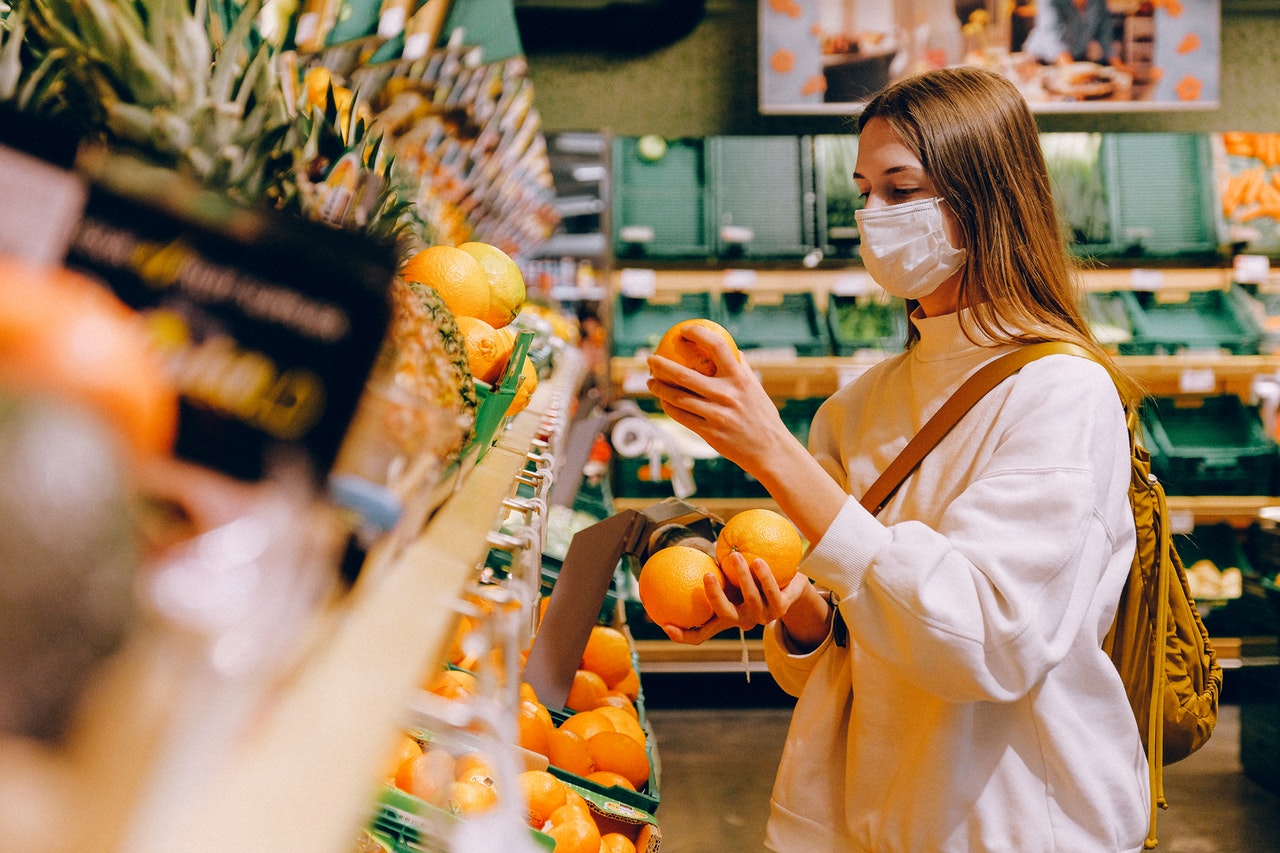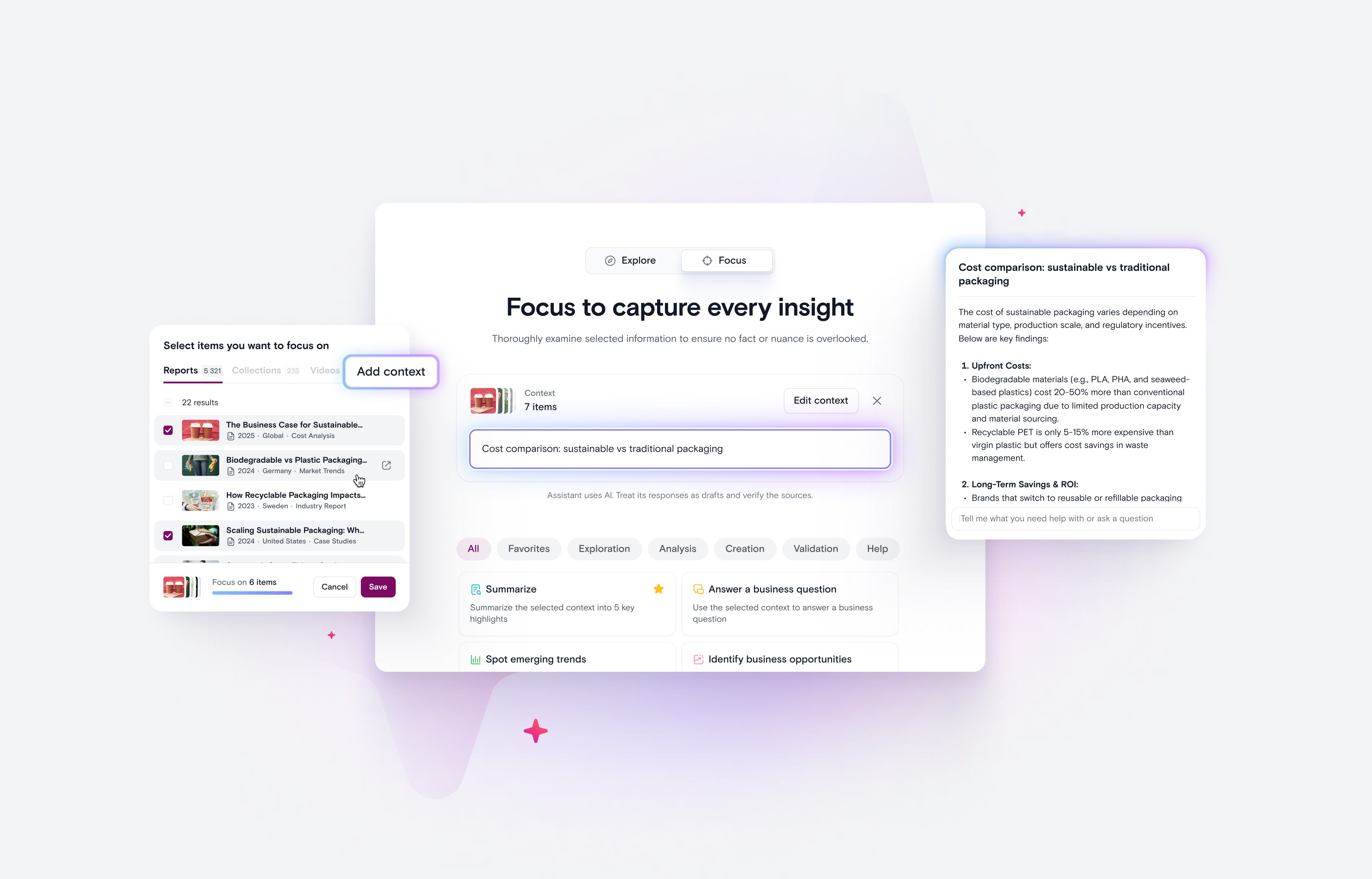Consumer Behaviour Change and the Pandemic with Phil Barden

In this episode of Spotlight, Stravito CEO Thor Olof Philogène spoke with Phil Barden, behavioural science expert, Managing Director of DECODE marketing ltd., and author of Decoded: The Science Behind Why We Buy. An industry veteran with 3 decades of experience, Phil worked for a variety of global brands before entering the research world himself. This episode explores the role of behavioural science in marketing, the value of implicit research methods, and the way the pandemic has changed what drives consumers’ decisions.
T: Why don’t you start off by telling everyone a little bit about your background? Because you’ve worked for some really interesting companies during your 25+ years in the industry.
P: I was fortunate to do a lot of my basic education at Unilever. I spent over 16 years there working in the UK, but also in Central and Eastern Europe at the time when the markets opened up after the Berlin Wall came down. That was super exciting–to be building businesses in Uzbekistan, Kazakhstan, Russia, Ukraine, etc. I then went to Diageo in a global role and then T. Mobile, working with a former Unilever colleague. Seemed to be a bit of a “Unilever Club” that exists for sure.
That was an interesting challenge. Going from two companies that were very much demand-led and brand-led, brands running in the veins of everyone in the business, to a technology-led business that was about product push, where marketing’s role was very different. It was about taking stuff to market and selling it, rather than working the other way around.
So that was the philosophy we were trying to change, and bring in understanding and approaches from Unilever. And that was huge fun–I worked in the U.K. firstly in the consumer business and then in Bonn in the head office as a VP for Brand in Europe. And [it’s been] quite a varied career, ranging from the delights of marketing tea out of Croydon in the U.K., to building 2 businesses in Poland, working globally for Diageo, and then working with a totally different category (mobile phones) in the U.K. and Bonn.
I thought I kind of knew a lot about consumer behaviour and how to change it, and how communications worked, and how brands worked, but I had my eyes opened in my last client role at T. Mobile. I had to relaunch and reposition the brand around Europe, and I had commissioned some very well known, very expensive, and very time-consuming research in 12 European countries, that frankly was useless. It just didn’t make sense and caused me a lot of personal problems because the local markets were just saying “What are you doing? This just doesn’t make sense for our market.”
And indeed it didn’t. I was really scratching my head because it was an approach that I had used extensively before. But then somebody introduced me to a couple of guys in Germany who had founded this business Decode. One of them was a neuroscientist, and the other a cognitive psychologist. And [this person] said “Just try them out. They’ve got an interesting perspective on behaviour.”
"We want people to buy our brands, to talk about them, to buy more, to switch, to tell their friends, to respond on social media, or share stuff. Whatever it might be, it’s about human behaviour."
Because marketing ultimately is about behaviour change, right? We want people to buy our brands, to talk about them, to buy more, to switch, to tell their friends, to respond on social media, or share stuff. Whatever it might be, it’s about human behaviour. And the more I talked to these guys, the more I had a lot of my existing mindsets and mental models challenged. Quite fundamentally, in some cases. But the more I talked to them, the more what they talked about made sense. I gave them some bits of work to do, like “Why did this ad test well and then fail in the market?” or vice versa. They’d look at it, and within 5 minutes they’d tell me.
And I’d say “Well, this is amazing. How do you know this stuff?”
They’d look at me quite puzzled and say, “How come you don’t know this stuff? Because we’re using a paradigm from cognitive psychology.” or “This is a study in social psychology that’s 20 years old! How come you don’t know about this in the commercial world?”
That was a big eye opener and a big challenge for me. But as a result, I commissioned them to work on the relaunch of T.Mobile. So I actually took a huge personal gamble, scrapped the research that we’d commissioned, and invested in new research with a new approach, a new methodology. A whole new approach. But it worked! And the whole relaunch was based on this research.
The research findings were used to craft a new brand proposition, which we used throughout Europe, and a new comms platform “Life is for Sharing”. That formed the basis of a brief to Saatchi & Saatchi, and the most famous example that they produced in the U.K. was the flashmob dance ad at London’s Liverpool Street Station. Which grew sales by 49% and has over 41 million YouTube views. It tripled brand consideration, and it doubled foot fall into T. Mobile retail stores within 48 hours of going on air. We were all shocked frankly. We’d never seen anything like this in the company.
I remember talking to the Decode guys saying, “Wow, this is amazing! We never thought it would work like this.” And they just scratched their heads and said “Why are you surprised? You’ve encoded motivators of human behaviour into that ad, why are you surprised that people respond?”
"That was a road-to-Damascus, lightbulb moment for me."
That was a road-to-Damascus, lightbulb moment for me. I seriously thought long and hard about what I wanted to do next. They gave me some interesting books to read, sort of popular psychology, because I’m not a scientist by background. And the more I read, and the more I talked to them, the more I understood, the more I just felt “This makes so much sense for brand management and for marketing in general.” Because it’s all about human behaviour.
In the end, I approached them and asked them if they’d like a U.K. office. That was 10 years ago, and I’ve been immersed in behavioural science since then.
T: And now you’re here today to talk about some really interesting research that you did earlier this year, related to the Covid pandemic. How did that project come about?
P: What struck us is there’s an awful lot of research that’s been conducted that falls into what I call the (pardon the expression) “No shit, Sherlock” category. Asking people how they feel right now, what they’re doing right now, is fairly obvious stuff. So we approached it from a different angle, which was to look at what are the unmet needs that have been created by this extraordinary context in which we’re living.
The psychological model behind this is to look at what drives motivation because there’s no action without motivation. This model talks about us having a current state, an actual self, which is what we experience, think, and feel right now, in a given moment. And then there is an ideal self, which is something against which we judge our current self. If there is a gap or discrepancy between these two, that acts to motivate us to close the gap.
You can think about this on a functional level. For example, if I say, “Right now I’m thirsty”, I’m conscious that I’m thirsty, there’s a discrepancy between how I feel and how I want to feel. So I get a drink, and I close the gap because I’m motivated to. And then there’s no discrepancy, so I’m no longer motivated to quench my thirst.
These gaps also work at a more social/emotional/psychological level. Which might have to do with our sense of belonging, wanting to boost our self-esteem, or wanting to be a good parent, etc. And these are goals that tend to be regulated at an implicit level, so we are not consciously aware of these things on a day-to-day basis. But our brain is monitoring this discrepancy between our current state and our ideal state and will motivate us to close that gap.
"And these are goals that tend to be regulated at an implicit level, so we are not consciously aware of these things on a day-to-day basis."
Another way to think about this is jobs-to-be-done. Anything we do aims to achieve the goal of reducing this job-to-be-done. And brands are important in this because we have learned over many years through building associations that they are instrumental in helping us achieve a job-to-be-done.
The other point about this job-to-be-done is that they are regulated by our internal state and the external situation in which we find ourselves. So internal state can be physiological like homeostasis (temperature, blood sugar, etc.). And the external state can be the context or situation we’re in right now, down to location and time, but also whether it's public or private. Both of those states change continuously, and that explains why human behaviour is dynamic. Because you change any of these things and those gaps or discrepancies between our current state and our ideal state change and fluctuate.
"Both of those states change continuously, and that explains why human behaviour is dynamic."
Based on that background, we wanted to do some research to find out what are these gaps right now. Not just what’s the current state (how people are feeling), but where the gaps are. The gaps are going to indicate what’s motivating to people right now. Because COVID was certainly something that would change the context and hence change those discrepancies.
We did this research in April during the first lockdown in Germany. So for anyone who wants to look at their own countries, they might want to use Germany as a proxy. But of course there are factors there that are unique. Unemployment rate, for example. If you were to extrapolate the results from this to the US, that would be tricky because there are very different unemployment rates. But we just did this to take a measure of a Western European economy.
And we used implicit methods, which are scientific methods that go back decades in social psychology, to measure the associations between the motivations between the actual and ideal self. What the implicit method does is it avoids people’s controlled, reflective responses. We just want their pure implicit, spontaneous, intuitive, gut reaction. Because that taps into our associative network in the brain.
We also used a model that we’ve used for 13 years as a business, across geographies, demographics, and categories. And this model looks at the social/emotional/psychological level. The reason we do that is it’s pretty easy for people to tell us at a functional, explicit level what the discrepancy is, what the gap is, but we don’t have introspective access to that social/emotional/psychological level.
So just to describe the model to you, it has 6 fields: excitement, adventure, autonomy, discipline, security, and enjoyment. Enjoyment, security, and discipline represent what we would call a prevention mindset. This is a mindset that has to do with risk avoidance. It’s about keeping hold of what you have and sort of hunkering down for safety.
"This is a mindset that has to do with risk avoidance. It’s about keeping hold of what you have and sort of hunkering down for safety."
The other three fields represent the psychological opposite, what’s called the promotion mindset. And this is about going out and facing the world, taking risks, and tackling challenges in order to achieve your goals. That’s the basic difference between the two mindsets.
Each of the fields mentioned above is subdivided into about 20 individual goals. So for example, in the security domain, we have things like, safety, caring for myself, caring for others, protection, reassurance, warmth, closeness, belonging, tradition, trust, etc. And these are the goals that we put into the research to look at the unmet needs, to see where this discrepancy existed. And we found some obvious things.
Things like security, friendship, or caring were amongst the top motivations, and you would expect that. But there were also less obvious ones like freedom, zest for life, and going my own way, which were also strong motivations. Going my own way sounds a bit counterintuitive when the pandemic indicates that standing together and solidarity is an overall key social objective. However, if you think about lock down and being constrained by new social norms, then that actually increases the perceived gap between the current state and the ideal state of being free to do as you want. So it’s not counterintuitive, but it is a very interesting motivation.
To learn more about what Phil and his team found, including 5 ways that brands can leverage these findings, watch the free webinar replay, available here.
Related Content

The Role of AI in Decision-Making: Smarter Insights or Faster Mistakes?
Thor Olof Philogène Apr 3, 2025

To Maximize the Value of Your Research, Start with Knowledge Management
Sarah Wiggins Mar 27, 2025

Stravito Enhances GenAI Assistant to Accelerate Time-to-Insight
Charlotte Hilton Mar 20, 2025